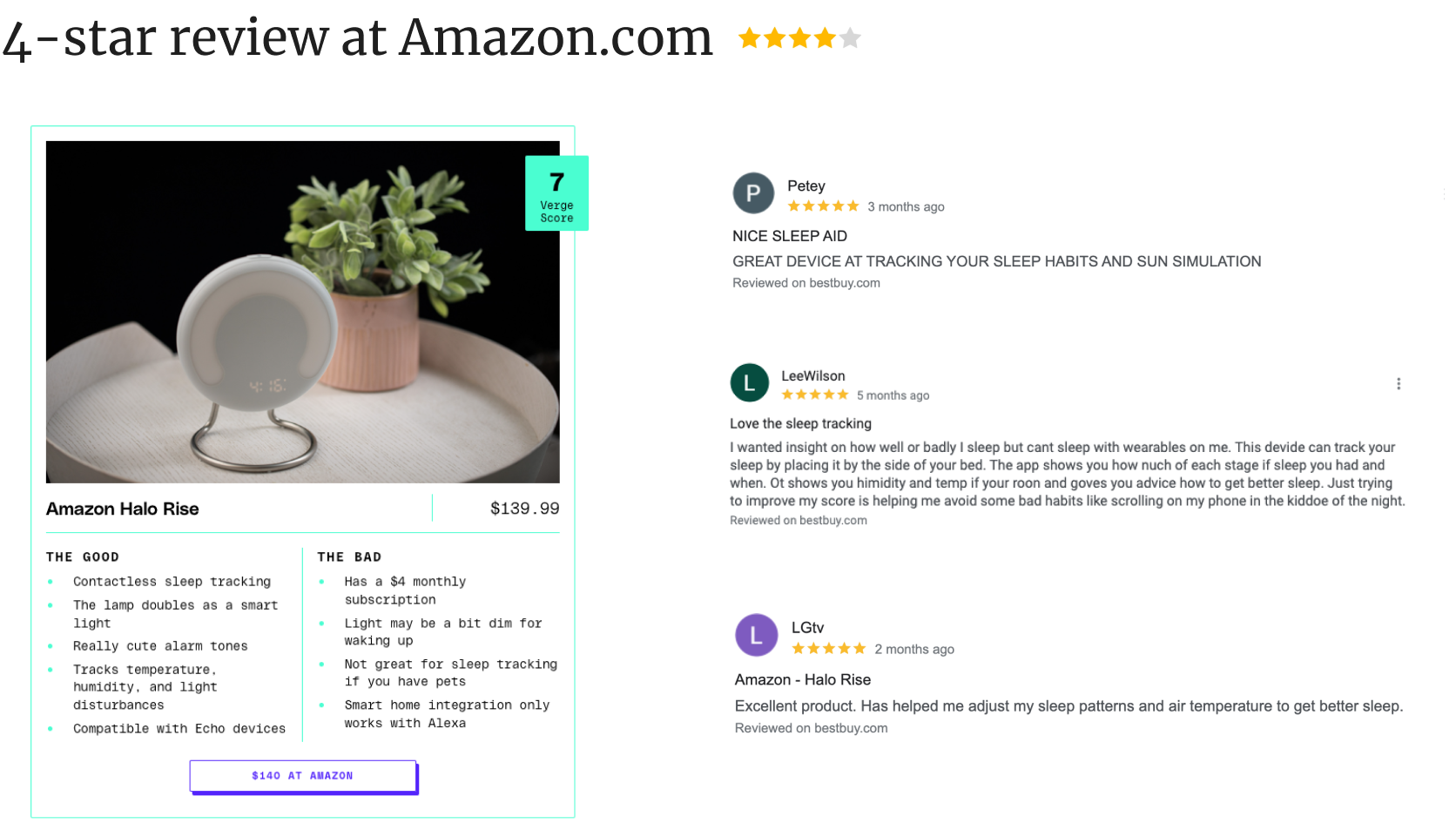
Halo Rise
In Sep 2022, Amazon introduced Halo Rise — a contactless bedside tracker with a wake-up light dedicated to helping improve your sleep.
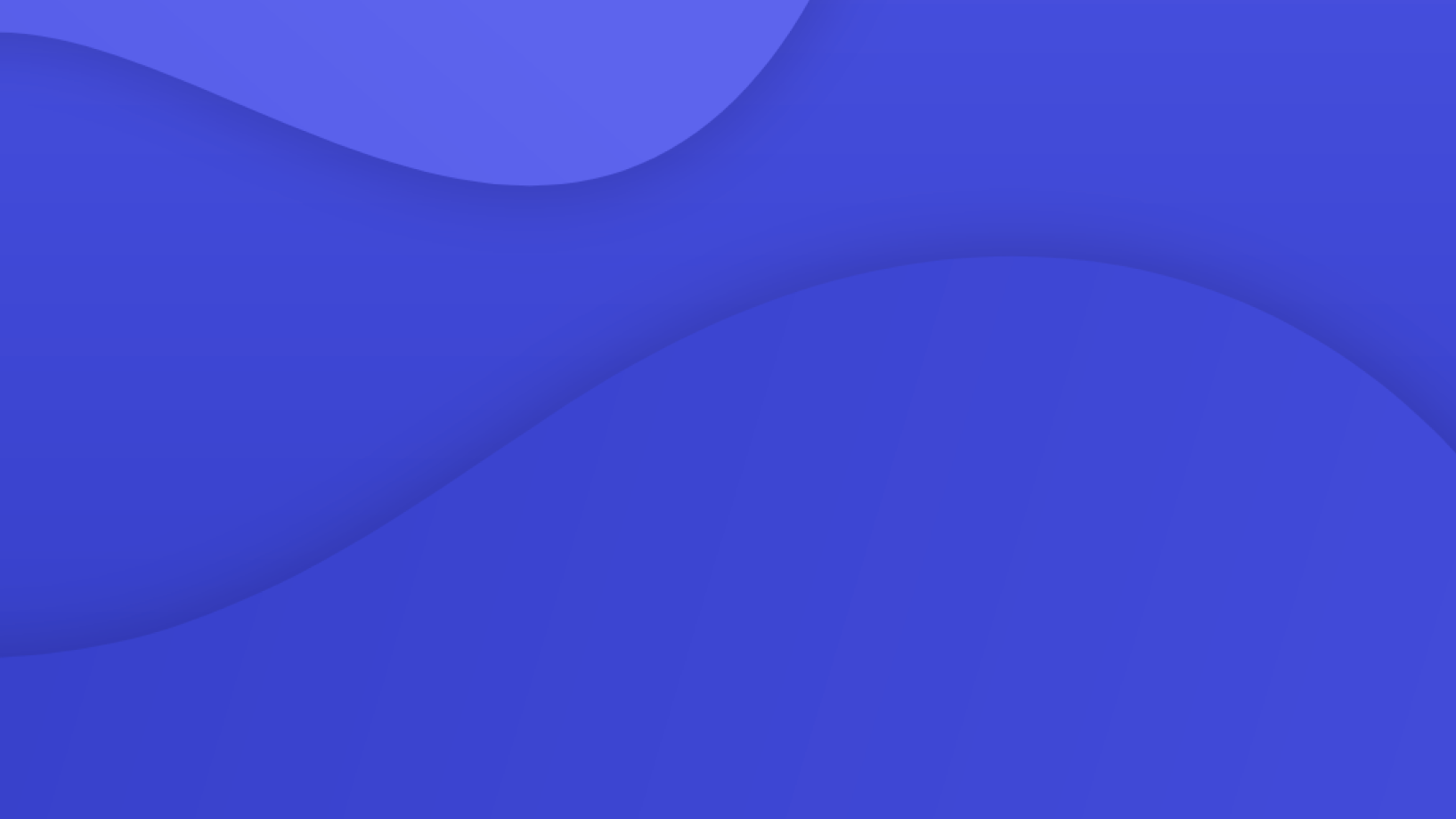

PROJECT OVERVIEW
Role
As a lead designer, I was responsible for end-to-end Halo Rise CX spanning across the Halo app, device display, the Alexa app, and Alexa devices.
Team
- 2 UXD IC
- 1 brand designer
- 1 LED lighting designer
- 1 UX researcher
Stakeholder
- VP leadership from 3 orgs
- 6 TPM/PM leads
- 10+ engineering teams
- Go-to-Market manager
Problem
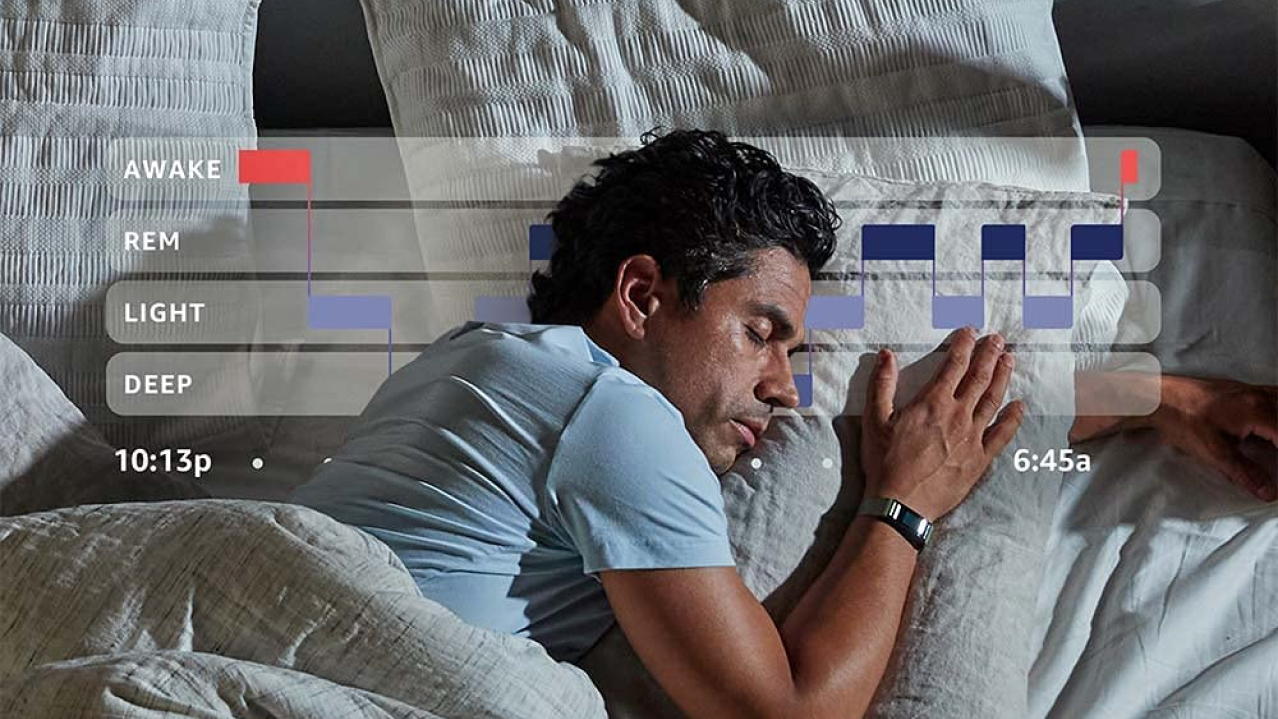
More than 1 in 3 U.S. adults are sleep deprived, according to recent studies. In order to improve sleep, tracking it is the first step. However, traditional wearables come with constraints. It requires charging every couple of days. Moreover, some people prefer not to wear any devices during sleep.
Solution
Halo Rise combines no-contact sleep tracking and environmental sensing with a smart alarm and wake-up light to help improve your sleep.
PLANNING STAGE
Challenge 1
Define end-to-end experience for Halo Rise customers
In order to define the end-to-end experience for customers, I had to take a step back to look at the bigger picture. I presented this in a stakeholder kickoff meeting and walked them through the journey map. In that meeting, I was able to align stakeholders from Alexa, Halo, and Lab126 on the high-level feature sets we are building.
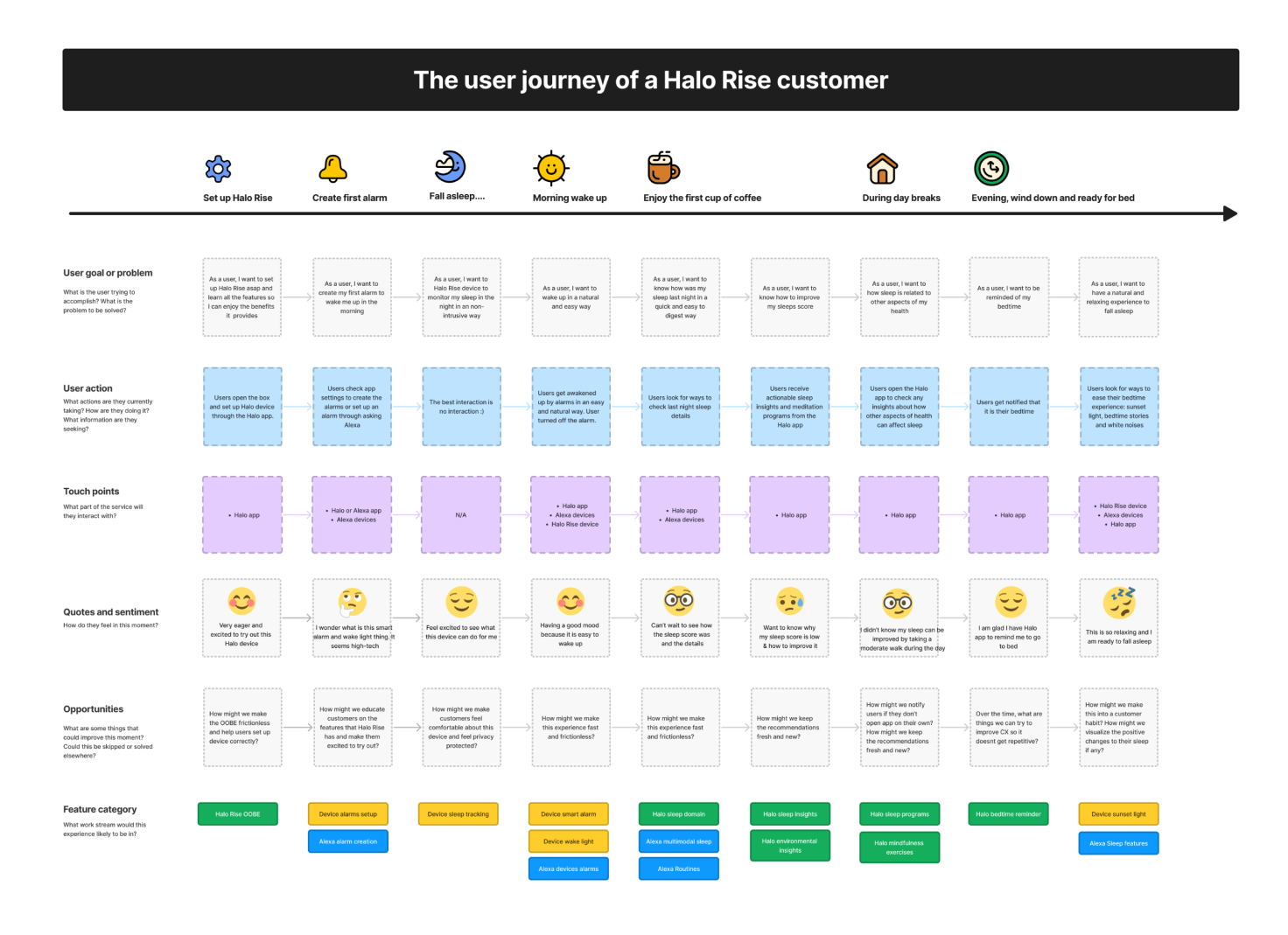
Challenge 2
Independently manage work across 10+ different workstreams
Providing timeline visibility and transparency helps educate stakeholders on what it takes for UX to be “done” rather than just a mock-printing factory. Raise awareness of prioritization and help align on the most critical items to work on. Foster collaboration among the design team, later adapted by other designers for other projects.

design STAGE
Customer need 1
Halo customers would like to see a coherent Halo app experience regardless of device type to minimize cognitive load.
Design strategy: 1) Halo Rise UX needs to be consistent with the existing Halo experience. 2) Any proposed changes to existing UX to accommodate Halo Rise integration will have to be thought through in Halo wearables/future (Multi-Device) lens.
Home page
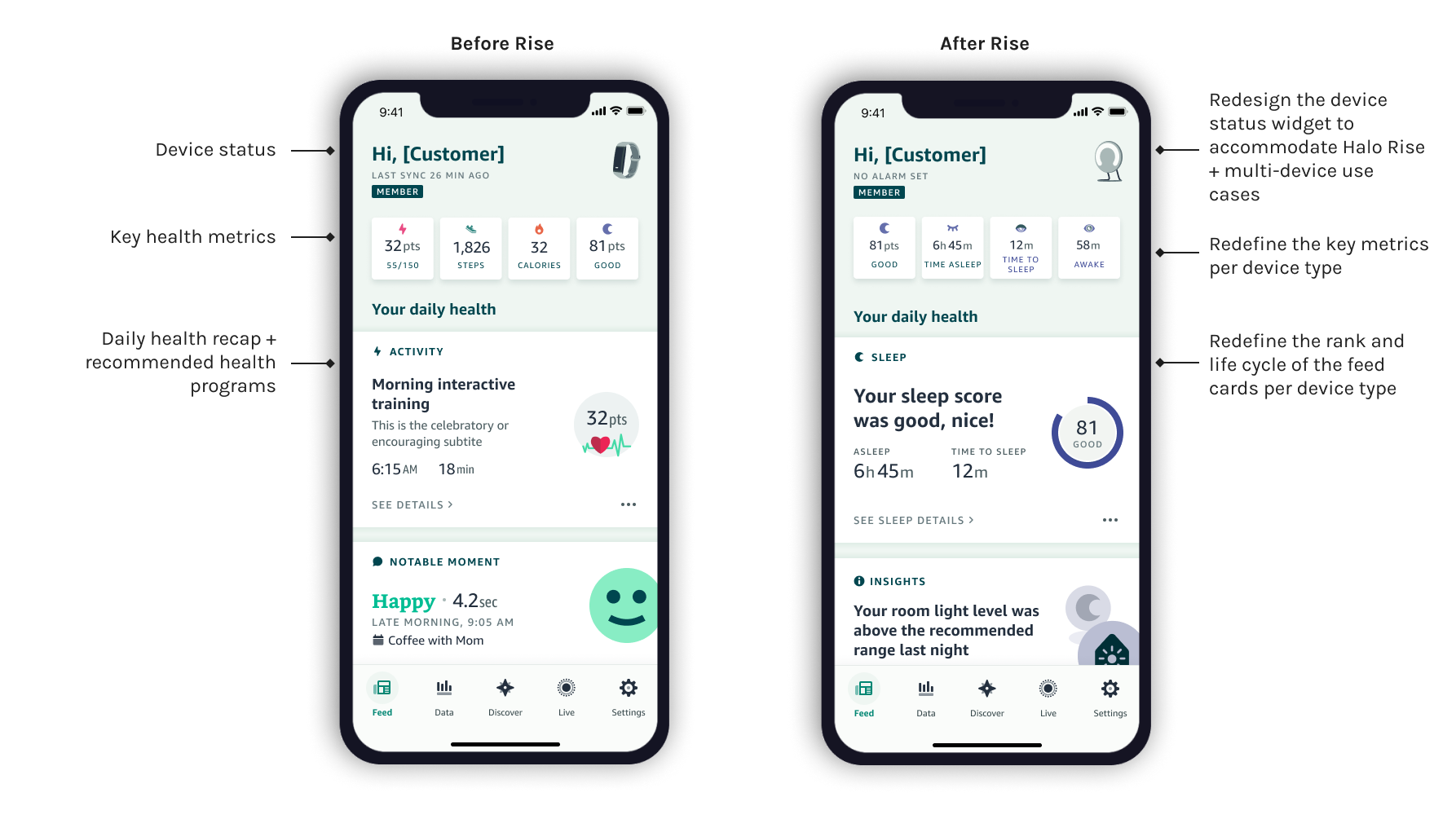
Sleep results

Settings page
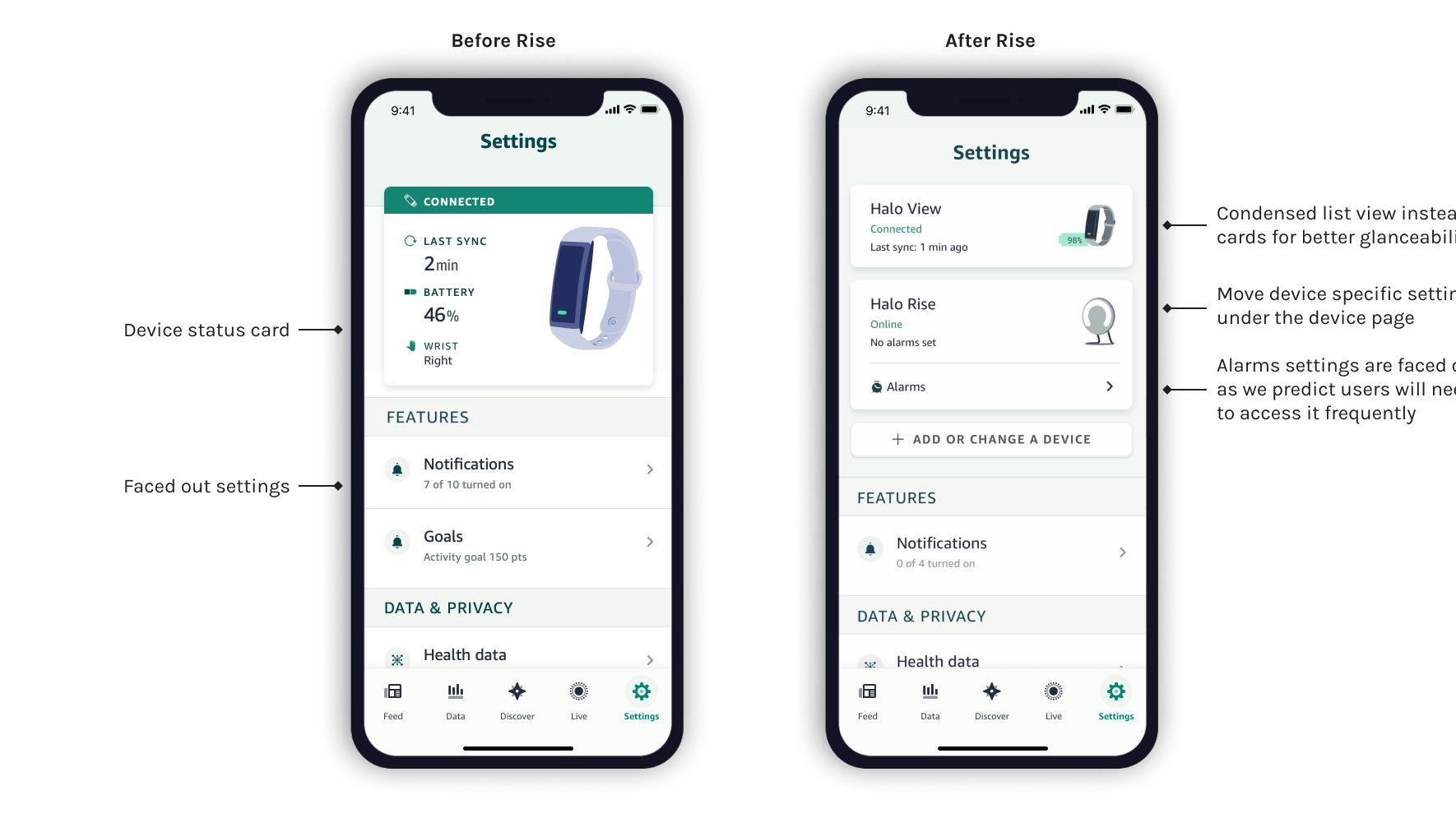
Scale to multi-devices
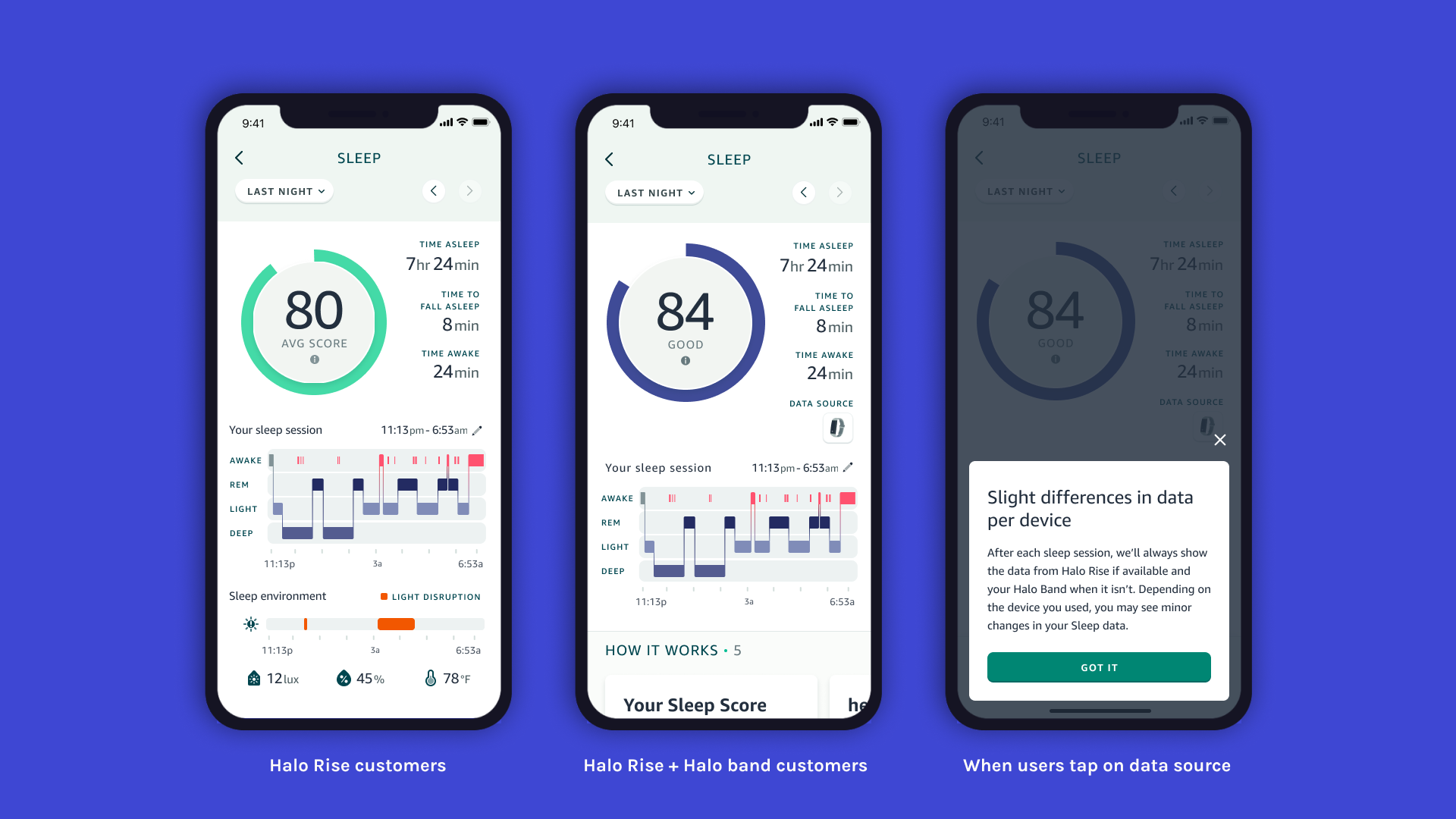
Scale to different modalities
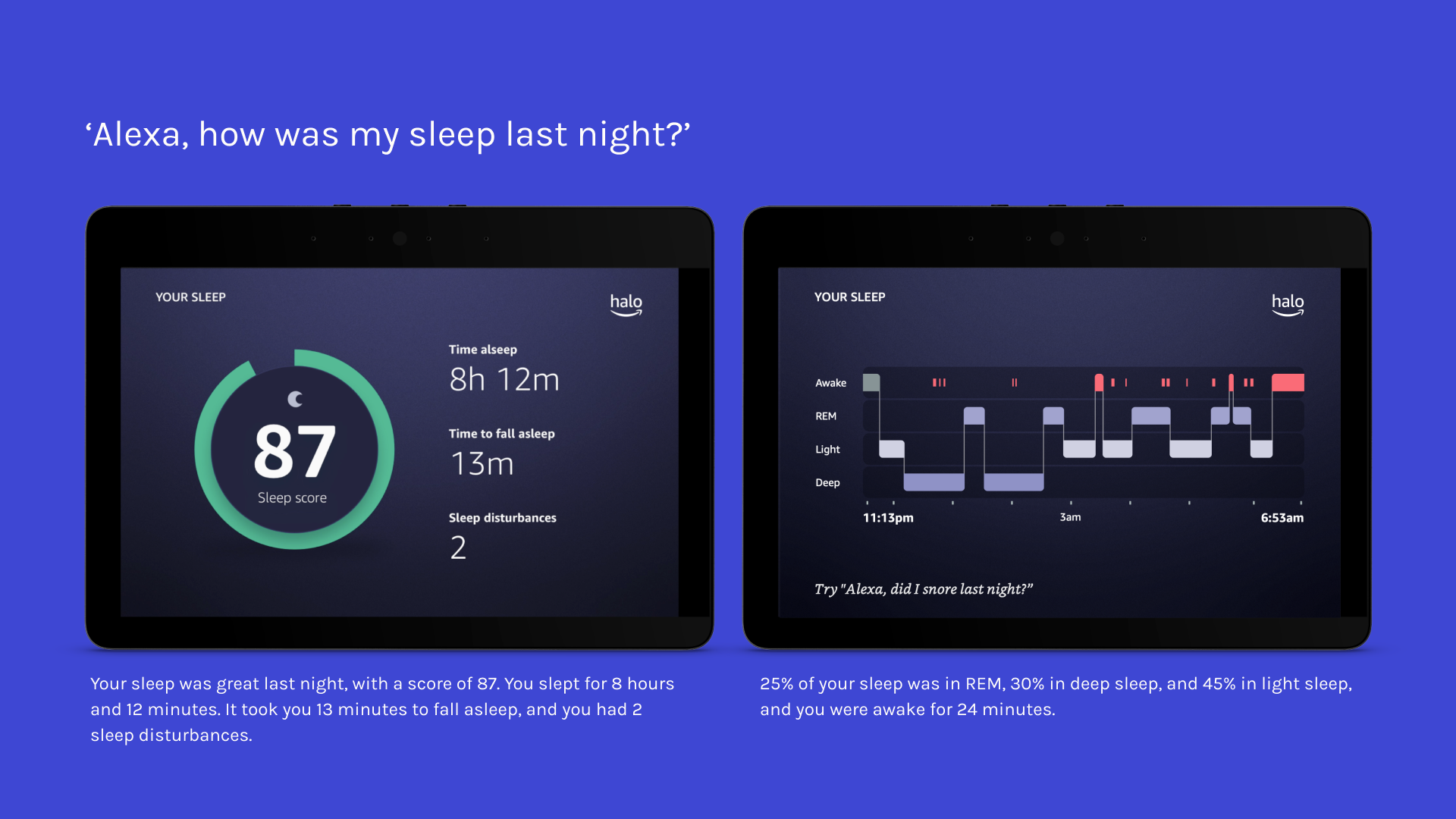
Customer need 2
Halo Rise customers would like to set up alarms to wake up naturally in the morning.
IA problem: Where would a Halo Rise customer go to create those alarms?

Halo app is an one-stop shop for viewing sleep information and managing Halo Rise settings

Existing Alexa customers use Alexa VUI/Alexa app to set up alarms. Using its back-end tech.
In order to build a customer-centric solution as opposed to building an org chart, I realized I need to put stakeholders into the customers’ shoes first. I organized a 2-hr workshop (with Lab126, Alexa and Halo PM and Eng leads) to dive into the needs of different customer personas first. Then I guided participants to brainstorm solutions that might meet customers needs.
Review the options
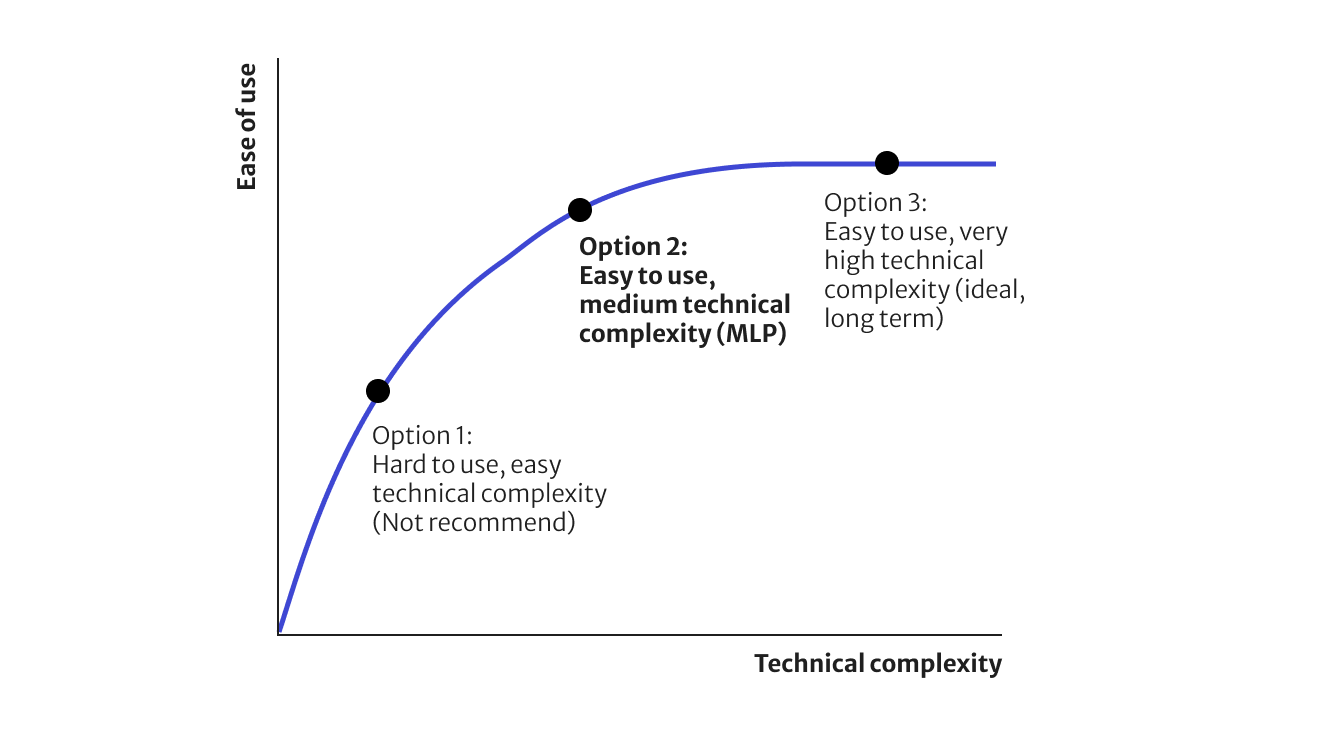
MLP alignment

Halo app
Set alarms on Halo Rise

Alexa app
Set alarms on echo with Rise light
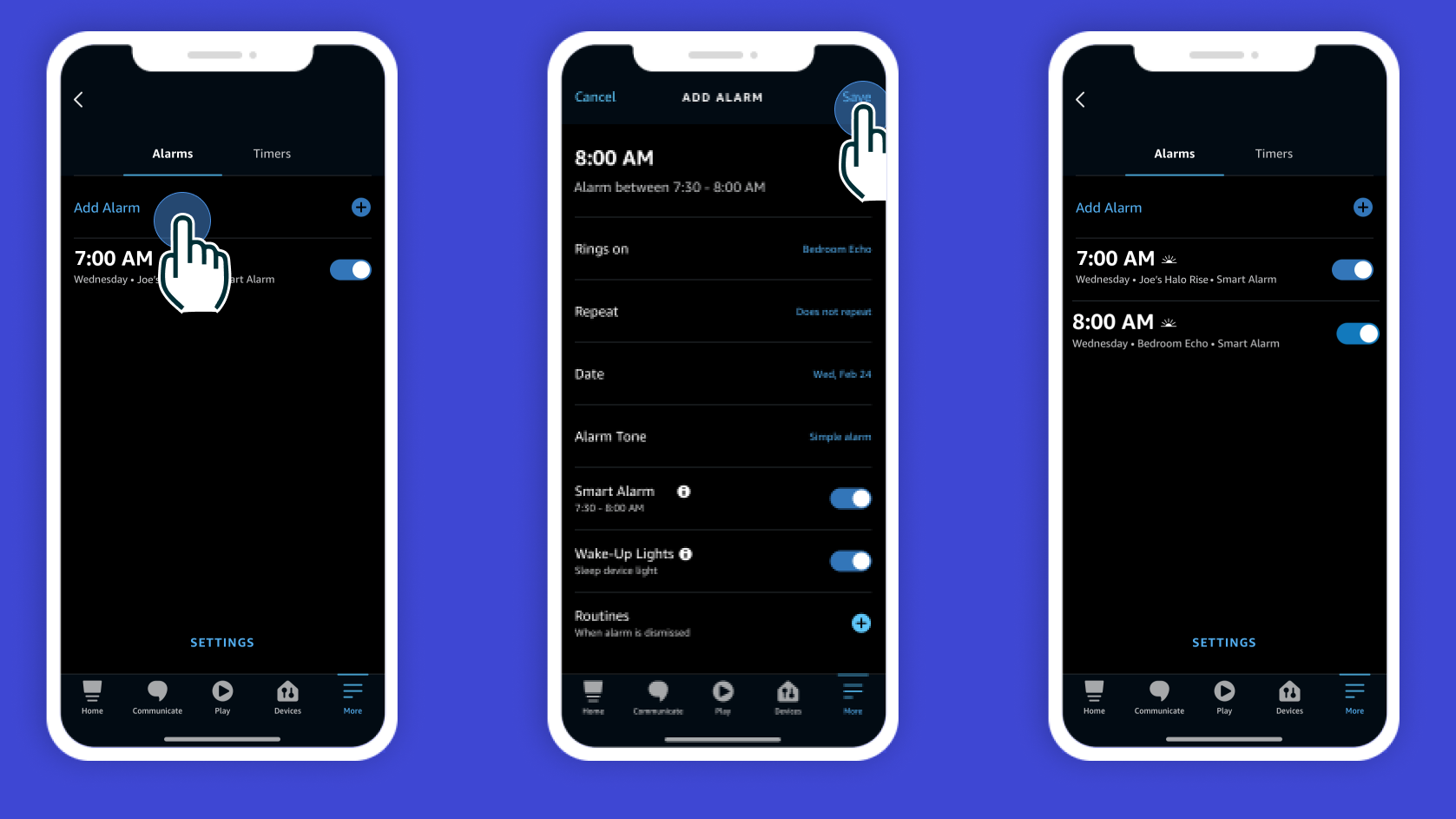
Customer need 3
Halo Rise customers would like to set up the device quickly to put it to use.
Customer feedback

“How do I know whether I placed the device correctly on my nightstand?”
Ideal solution
One easy solution would be building a calibration procedure so users can get feedback on whether the device is placed correctly or not.
However, that would take over 6+ months Engineering work to modify hardware capabilities, which is unrealistic considering the timeline.

Other solutions
- Auto-play short tutorial video on the Feed for the first two weeks.
- Improve the clarity of the placement instructions through visual & copy (see attachment below).
- A weekly reminder (only if users opt-in) nudging users to keep the device in place.

IMPLEMENTATIOn STAGE
Challenge
Work with 5+ engineering teams (in 4 different time zones) to ensure designs are built correctly.
In order to allow me to scale while maintaining a high bar, I have implemented the following mechanisms.
Weekly UX Share-out
- To provide visibility, answer questions, and identify areas of risk.
- Each week, I would send out agenda in advance to let stakeholders know what I would be sharing so they could attend accordingly.
- WIP designs were shared with Eng to gain early directional alignment.
Async Collaboration Best Practices
- Working with teams in different time zones
- Fostering communication and collaboration async
A standardized UX handoff process
- Foster collaboration between UX and Eng in early stage (especially if the eng resource was allocated after design is finalized).
- Set expectations for Engineers prior to design handoff.
- Minimize the risks of too many UI bugs later on.
A UX verification checklist
- As a UX reviewer, what should I include in the handoff spec?
- As an engineer, what should I consider in implementation and testing?
Launched in Nov, 2022
The device and app experience was rated 5.7 (out of 7) to successfully exit the launch criteria in Sep. It was available to customers in Nov 2022.

Organizational Impact
Standardize the UX/ENG collaboration process within the Halo org.
Customer Impact
Launched a 4-star review product with high customer satisfaction.
